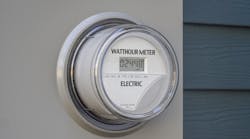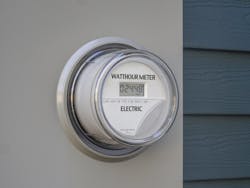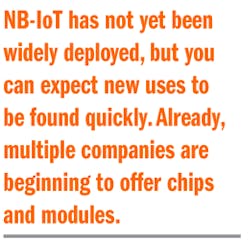Have you heard of this? With so much hype and coverage of the Internet of Things (IoT), it’s understandable that you may have missed mention of yet another wireless technology for enabling IoT applications. NB-IoT is one of a group of relatively new LTE standards published by the Third Generation Partnership Project (3GPP), the organization that develops and standardizes our cell phone systems. NB-IoT is included with the 3GPP’s Release 13 standard, finalized in June of this year.
NB-IoT is part of the technology known as cellular IoT. It uses the existing 4G LTE networks for machine type communications (MTC) for thing to-thing connections. The idea is not new, as this technology has been around for years: Machine-to-machine (M2M) communications uses existing GSM, WCDMA, cdma2000 networks, and LTE for data communications.
Cellular IoT is the new M2M. NB-IoT gets its internet connectivity by way of current mobile network providers. This is to differentiate it from other short-range IoT technologies such as Wi-Fi, Bluetooth, ZigBee, and others that talk to an intermediate gateway to achieve an internet connection by cable, fiber, DSL, microwave backhaul, satellite, or cellular.
Technical Details
NB means “narrowband” and refers to the fact that it uses less bandwidth than any other version of LTE—specifically, 200 kHz vs. the smallest previously defined LTE bandwidth of 1.4 MHz. In fact the NB-IoT signal is exactly one LTE Physical Resource Block (PRB) wide. A PRB is the basic building block of LTE’s OFDM signals. This means 12 subcarriers that are 15 kHz wide, making a total of 180 kHz. That why NB-IoT is compatible with existing LTE systems.
An NB-IoT signal can be dropped right into a standard 10 MHz or 20 MHz channel without disruption of service, or else used within the standard channel guard bands. It also fits nicely into the still-existing GSM/GPRS spectrum of multiple 200 kHz channels that is being reallocated.
Other features of NB-IoT are OFDMA downlink and single carrier uplink, using either the 15 kHz subcarriers or 3.75 kHz subcarriers for a more robust connection. Modulation is some form of QPSK. Signaling is half duplex. Data rates are a maximum of 250 kb/s downlink and 20 kb/s uplink using a single-tone modulation scheme. Latency is typically less than 10 ms.
The main benefits are related to being compatible with in-place LTE networks. This provides instant connections with existing providers. Furthermore, the connection range is considerably longer than other IoT wireless technologies—up to several miles. In addition, because of the use of dedicated licensed spectrum, interference is less about making connections more reliable than the use of the unlicensed spectrum of Wi-Fi, Bluetooth, and ZigBee in the crowded 2.4 GHz band. LTE also has the benefit of working well indoors where many applications will exist. Finally, NB-IoT is designed to be a low-power and low-cost technology.
Applications
NB-IoT will fit nicely into existing M2M applications such as fleet management, asset tracking, and smart metering. Others include agriculture (irrigation) and real estate monitoring, remote facilities monitoring and control, city lighting, and environmental monitoring. With its proposed low power consumption, battery life should be long even in long-range coverage. New applications will be found, thereby increasing IoT usage worldwide.
The Competition
NB-IoT now joins the IoT segment generally referred to as the low-power wide area networks (LPWAN). Many IoT applications work fine over short distances, and so are a good fit for standard wireless technologies like Wi-Fi, Bluetooth, ZigBee, or their derivatives. Other applications call for longer-range connection of devices, ranging from several thousand feet to several miles. Such applications are best met with some of the new standards like Ingenu, LoRa, Nwave, Sigfox, and Weightless.
These competing standards are good for connections up to 10 to 15 km. Gateways and/or a network of basestations are required. NB-IoT can achieve similar distances depending on existing LTE basestation spacing.
What’s Next?
NB-IoT has not yet been widely deployed, but you can expect new uses to be found quickly. Already, multiple companies are beginning to offer chips and modules. Some of these companies include u-blox, Sequans, Intel, Huawei, Ericsson, and Qualcomm. Trials are ongoing, such as Nokia’s recent successful test of its products on Finland’s Sonera network. Others are in the works. It’s easy to predict that NB-IoT will find its niche in the IoT world.



